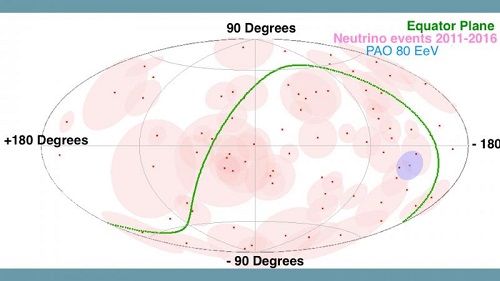Scientists still explore the sources of very high energy Neutrinos, the subatomic particles created in the process of nuclear fusion inside astrophysical objects. They try to understand the processes inside these high energy phenomena by studying the high energy electromagnetic radiations coming from them.
Bangalore (ISJ) – Scientists study the neighbouring planets by sending spacecrafts to them. But can we study black holes, supernovae, supernova remnants, neutron stars and other astrophysical objects, thousands of light years away, by sending spacecraft to them? Of course not.
We try to understand the processes happening inside these high energy phenomena by studying the high energy electromagnetic radiations coming from them such as the very high energy gamma rays and very high energy neutrinos. Very high energy gamma rays while travelling to earth interact with background radiations and lose their energy before reaching us. So, astronomers search for very high energy neutrinos, which are almost immune to background radiations, to study very high energy phenomena.
Neutrinos are subatomic particles created in the process of nuclear fusion inside astrophysical objects. They have infinitesimal mass, no charge, and are accompanied by corresponding antineutrinos.
Neutrinos are present in abundance, with around 65 billion neutrinos passing through every square centimetre of our body, each second. Astrophysicists study neutrinos coming from distant sources to understand the processes in their core.
“Neutrinos and antineutrinos can act as messengers of physical phenomena inside astrophysical objects. They are neutral, weakly interacting particles travelling to us in straight lines from their sources, So, they can act as probes of cosmic ray interactions inside astrophysical objects,” said Prof Nayantara Gupta. Prof Gupta is Associate Professor at Raman Research Institute, Bangalore and researches on very high energy particles gamma rays, high energy neutrinos and origin and propagation of cosmic rays.
In her latest research, Prof Gupta tried to understand the sources of the very high energy neutrinos detected by the IceCube Neutrino Observatory in Antarctica. IceCube is a collection of thousands of sensors distributed over a cubic kilometre of Antarctic ice, continuously monitoring the cubic kilometre of ice for neutrinos.
“Neutrinos are usually undetectable, but when they fall on ice, a secondary particle is produced which in turn emits light” Prof Gupta explained. “The sensors beneath ice collect the light, which is subsequently digitized and time stamped. This information is then sent to computers in the IceCube Lab on the surface which process it and reveal the direction and energy of neutrinos.”
Over the years, IceCube detected a flux of very high energy neutrinos coming from all over the sky, suggesting an extra-galactic origin of these neutrinos. The sources of these very high energy neutrinos puzzled astrophysicist all over the world.
Prof Gupta assumed that the interaction of cosmic rays with cosmic microwave background radiation to be the origin of the high energy neutrinos detected by IceCube. Cosmic rays are charged and neutral high velocity particles of mysterious origin propagating from outer space, whereas cosmic radiation background or Cosmic Microwave background (CMB), is the photon background, believed to be the remnant of the Big Bang.
“Interactions of photons and cosmic ray nuclei result in production of nucleons, like protons or neutrons, stripped out from the parent nuclei. If the stripped nucleons are neutrons, they decay and neutrinos and antineutrinos are produced,” explained Prof Gupta.
To verify the assumption, Prof. Gupta calculated the flux of the neutrinos resulting from the interaction of cosmic rays with CMB. To her surprise, the calculated neutrinos flux was found to be several orders of magnitude less than that of neutrinos detected by IceCube. This disproved the assumption that the high energy neutrino events detected by IceCube were a result of cosmic rays’ interactions in space and points to astrophysical point sources as their origin.
At present, challenges in Neutrino Astronomy are to identify the origin of these very high energy neutrinos and understand their production mechanisms and properties. Although one theory for their origin has been discredited, it opens the doors for other explanations for the mysterious origins of the high energy neutrinos.
“Other sources could be Galactic sources like supernova remnants, Galactic centre region or extragalactic sources like active galactic nuclei and gamma ray bursts,” added Prof. Gupta, while discussing about the other possible sources of neutrinos detected by IceCube.


